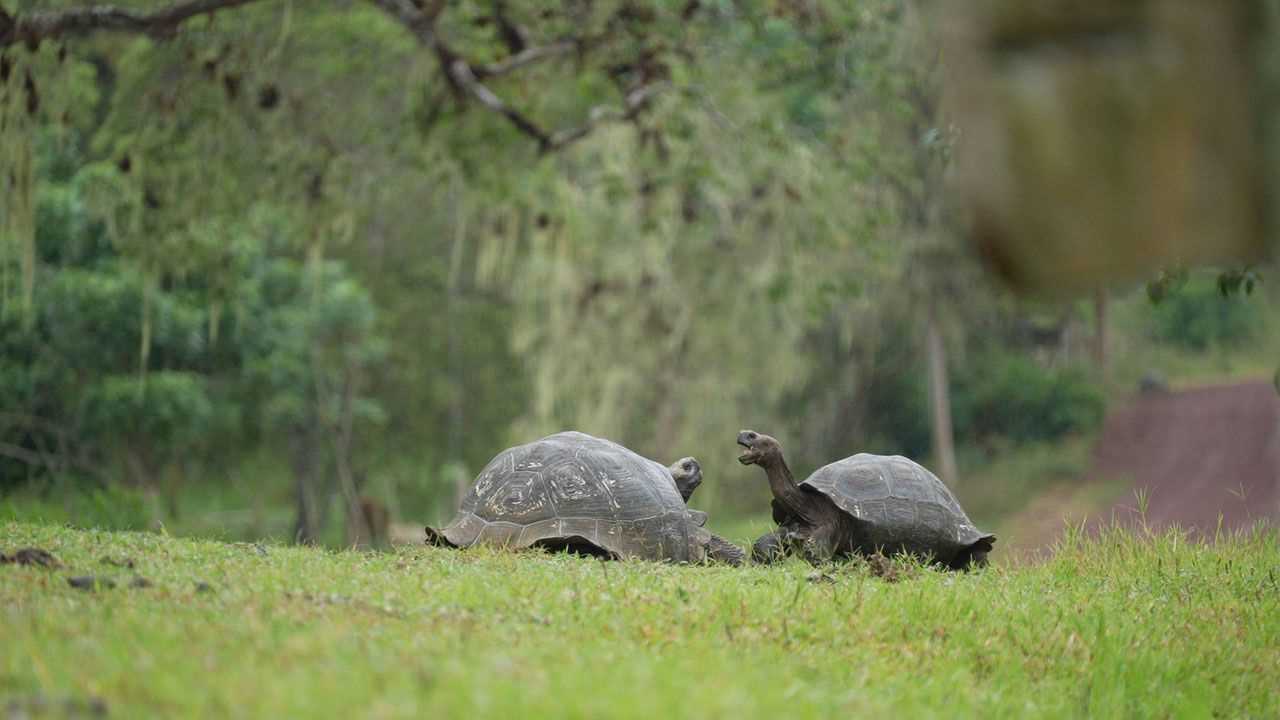Guests spent the day exploring the island of Santa Cruz. One of four inhabited islands in the Galapagos, Santa Cruz has the largest human population and is considered the economic hub of the province. We spent the morning at a beautiful ranch in the highlands looking for Santa Cruz giant tortoises. We walked the trails, spotting giant tortoises and learning about the behavioral ecology of these magnificent creatures. We spent quite some time taking photos. After a delicious lunch, we visited the giant tortoise breeding center at the Charles Darwin Research Station. Here we had the opportunity to learn about important efforts to protect species of giant tortoises from extinction. We ended the day with a great visit by some local artists who came on board to share the wonderful creations they make, which are inspired by these islands.
- Daily Expedition Reports
- 30 Jan 2023
Santa Cruz Island, 1/30/2023, National Geographic Islander II
- Aboard the National Geographic Islander II
- Galápagos
Felix Reyes, Videographer
Felix is from Santa Cruz Island in the Galapagos archipelago. Since he was a little kid, he accompanied his father on daily expeditions, the mission; their guest fell in love with their Islands and ship. As a child swimming, he was living proof that ...
Read MoreShare Report
Galápagos Escape: An 8-Day Voyage
VIEW ITINERARYRelated Reports
6/23/2025
Read
National Geographic Islander II
Española Island
Today we visited Española Island, the southernmost—and one of the most spectacular—of all the Galápagos Islands. Known for its unique wildlife and dramatic landscapes, Española offered us a day full of unforgettable encounters. In the morning, we landed at Gardner Bay, where a long stretch of white coral sand welcomed us. Galápagos sea lions lounged along the shore, completely unfazed by our presence. Offshore, we snorkeled in the clear waters among colorful reef fish and Pacific green sea turtles. Playful sea lions swirled around us like underwater acrobats. In the afternoon, we explored Punta Suárez, one of the best wildlife viewing sites in the entire archipelago. The trail led us through colonies of Nazca boobies and blue-footed boobies, some engaged in nesting or courtship dances. We also witnessed waved albatrosses, many sitting on eggs or gliding in the wind above the cliffs. The highlight for many was watching a pair of albatrosses perform their elaborate, synchronized courtship ritual, full of beak clacking and head swaying. As we approached the cliff’s edge, we were treated to the dramatic sight of waves crashing against the rocks and the famous blowhole, which sent bursts of water high into the air. With seabirds soaring overhead and marine iguanas sunbathing in every direction, the magic of Española was on full display.
6/22/2025
Read
National Geographic Islander II
Floreana Island
Today the guests of National Geographic Islander II had a chance to snorkel at Champion Islet, just off Floreana Island. It was a breathtaking expedition to one of the most vibrant marine ecosystems in the Galapagos. As soon as we slipped into the water, we were greeted by schools of colorful fish and playful Galapagos sea lions.







